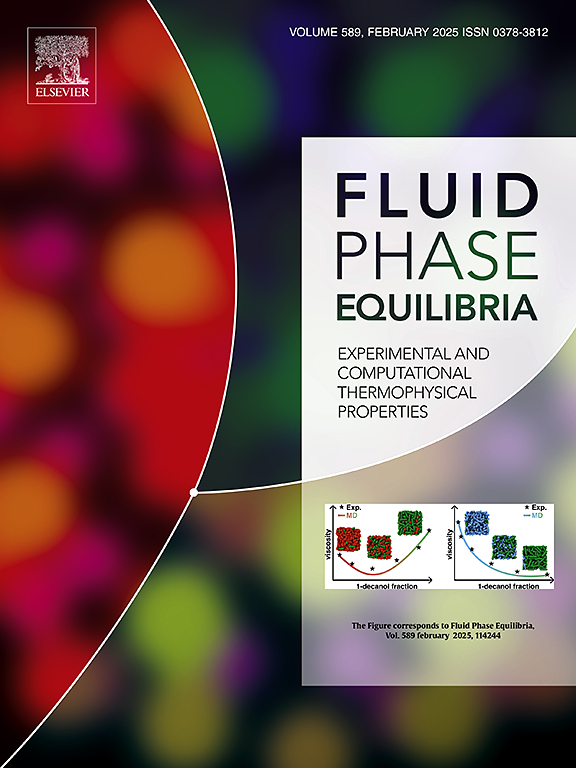Density gradients in aqueous salt solutions: A challenging calculation for electrolyte equations of state
IF 2.8
3区 工程技术
Q3 CHEMISTRY, PHYSICAL
引用次数: 0
Abstract
In clinical laboratories around the world, isopycnic separations are routinely used to separate biological materials based on density differences. One of the techniques to form a density gradient for such separations is to centrifuge an aqueous salt solution. The high angular speeds, salt concentration and pressure can reach high values, creating challenging conditions for the modeling of centrifugation equilibrium. This paper addresses this problem and presents a formulation and a solution procedure for determining the thermodynamic equilibrium of electrolyte solutions during centrifugation. This is accomplished by a nested-loop algorithm; the outer loop iterates on the liquid volume; the inner loop minimizes the Helmholtz function at the given temperature and component amounts, for the current volume value. The Helmholtz function is evaluated as the summation of an intrinsic contribution given by the eSAFT-VR Mie equation of state, an external contribution of the centrifugal field, and induced electrostatic contribution associated with the possible displacement of charged species in the system. In general, qualitative agreement between the experimental and calculated density profiles was observed in the three systems studied.

求助全文
约1分钟内获得全文
求助全文
来源期刊

Fluid Phase Equilibria
工程技术-工程:化工
CiteScore
5.30
自引率
15.40%
发文量
223
审稿时长
53 days
期刊介绍:
Fluid Phase Equilibria publishes high-quality papers dealing with experimental, theoretical, and applied research related to equilibrium and transport properties of fluids, solids, and interfaces. Subjects of interest include physical/phase and chemical equilibria; equilibrium and nonequilibrium thermophysical properties; fundamental thermodynamic relations; and stability. The systems central to the journal include pure substances and mixtures of organic and inorganic materials, including polymers, biochemicals, and surfactants with sufficient characterization of composition and purity for the results to be reproduced. Alloys are of interest only when thermodynamic studies are included, purely material studies will not be considered. In all cases, authors are expected to provide physical or chemical interpretations of the results.
Experimental research can include measurements under all conditions of temperature, pressure, and composition, including critical and supercritical. Measurements are to be associated with systems and conditions of fundamental or applied interest, and may not be only a collection of routine data, such as physical property or solubility measurements at limited pressures and temperatures close to ambient, or surfactant studies focussed strictly on micellisation or micelle structure. Papers reporting common data must be accompanied by new physical insights and/or contemporary or new theory or techniques.
 求助内容:
求助内容: 应助结果提醒方式:
应助结果提醒方式:


